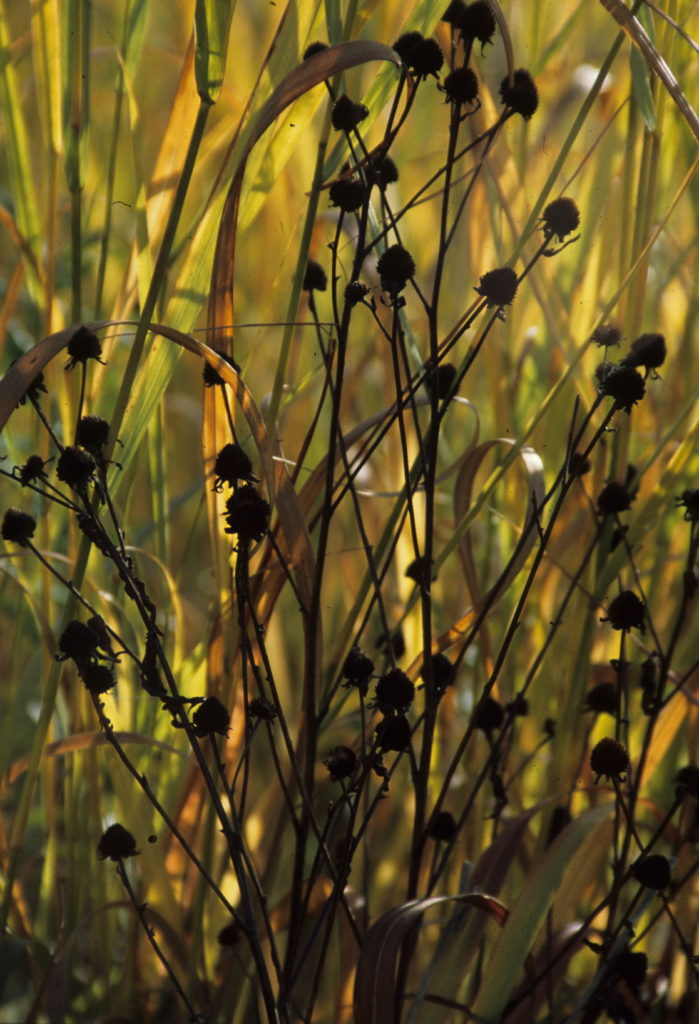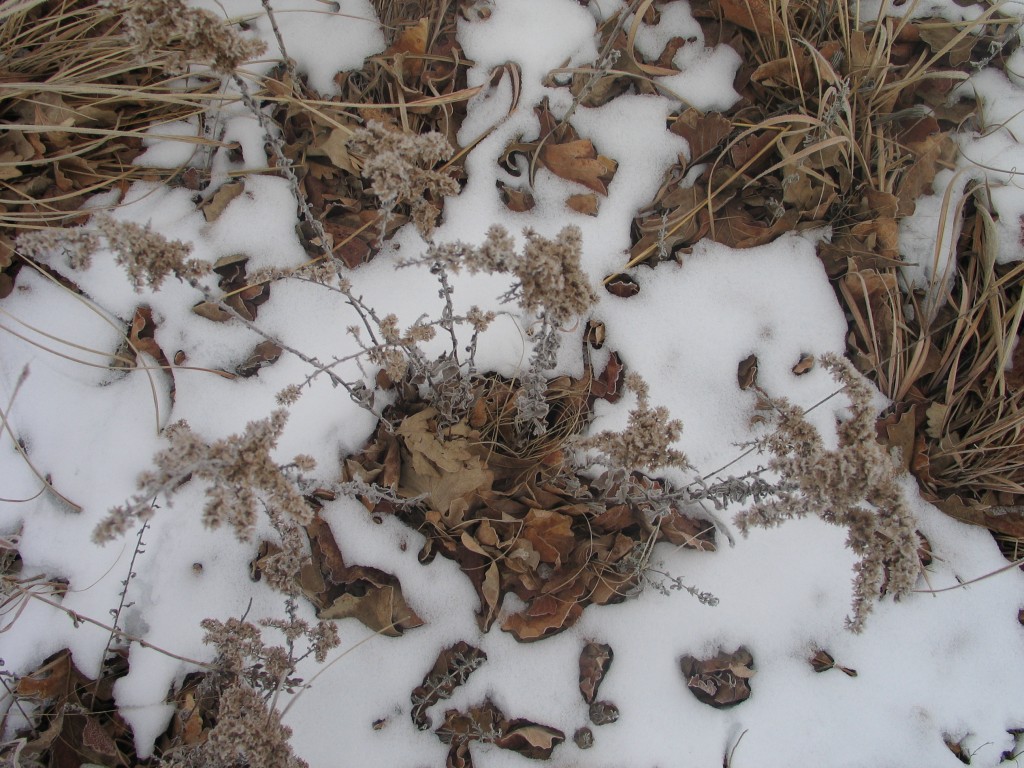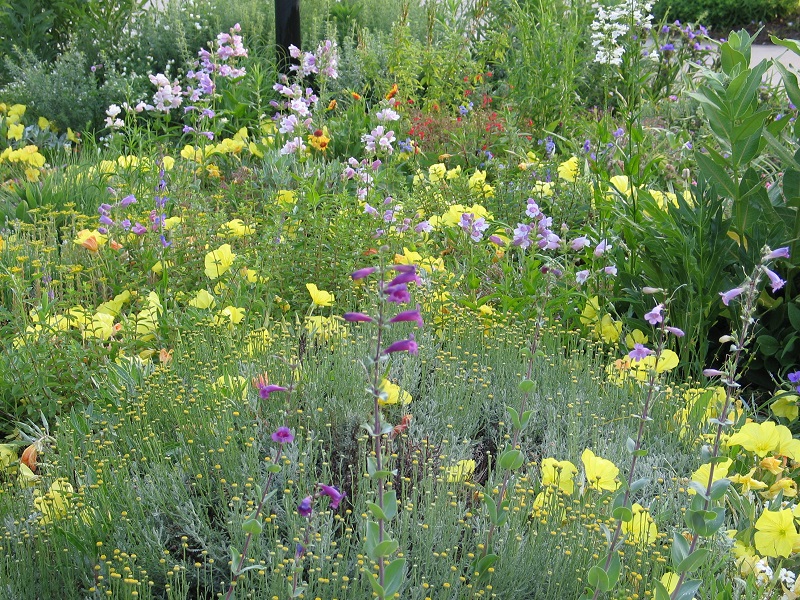It seems that winter has come earlier than expected this year. I don’t know about you, but I have been caught a little off guard. I wish I could say we have everything ready for winter, but that would be untrue. In preparation for colder weather, I have put a simple checklist together for putting the winter garden to bed.
Perennials
Every year we receive quite a few questions about when to cut back perennials. As a general rule, I leave perennials such as wildflowers and grasses stand through the winter. The forms and textures of plants such as little bluestem and switchgrass provide movement in the winter garden and should be left standing. Coneflowers, black-eyed Susans and coreopsis are important seed sources for birds. The dark seed heads and stems look great with a backdrop of little bluestem.
I take note of plants that need to be divided and/or moved next February or March. Diseased plants with powdery mildew or rust should be removed. Those infected leaves will harm next year’s plants.

Lawns
Fall is an important time for lawn care. Obviously, the leaves that fall must be removed or composted into the lawn. More frequent mowing/composting can take care of a majority of the leaves, but if you have large trees, the leaves must be removed. A large covering of leaves will smother your lawn. It is also an ideal time to fertilize cool season grasses. The nutrients will be taken up and stored in the roots for vigorous growth next year. If you have a warm season lawn such as buffalograss, now is the perfect time to control winter annuals such as henbit, dandelions and bindweed. Spraying with a broadleaf weed killer such as 2,4-D will clean up your lawn for next season. Be sure you’re using a spray that is labeled for buffalograss.
Leaves
I purposefully don’t remove some leaves in perennial beds to insulate the plants. In a shade garden, they are perfect as mulch. Just don’t let them get so thick that they smother out your woodland plants. Leaves make great compost that can be used in your garden or flower beds.

Clean and sharpen tools
I often overlook this step in the fall garden prep checklist. A little time cleaning your tools like shovels, spades and other digging tools will give you a jump start next season. This simple practice will prolong the life of your tools. Doing this will prevent rust and deterioration. I like to use a wire brush in the cleaning process before I sharpen each tool. By cleaning off dirt and debris and applying a thin coat of oil, you will extend the life of each tool.
Store power tools
We always have trouble with our gas powered tools in spring. We forget that they need to be drained of standard pump gasoline before being stored for long periods of time. Today’s gas deteriorates relatively quickly and gums up the carburetors. Empty your fuel tanks into storage containers of fuel, oil, and fuel mix if you are not going to be using the equipment in the next 30 days. We add fuel stabilizer to the stored fuel over winter. We like to run the engine completely out of fuel before we put it away.
Disconnect and drain garden hoses
Obviously, garden hoses that remain attached to the spigot during cold weather will create problems. This connection and the trapped water in the hose will freeze not only the hose, but the spigot on your home. I have seen these freeze and then burst as they thaw out. It can be a mess and quite costly.
Drain garden hoses before you store them for the winter. It is best to bring them inside so they are not deteriorated by the winter sun. Extreme winter conditions also break down the inner lining of the hose, weakening it over time. We like to loop each hose into two to three foot loops. Create flat stacks of coiled hoses. Hanging hoses will put stress on the areas where they are attached to the wall.
Spring seems like it is so far away, but it will be here before we know it. By doing a few simple tasks in your garden this fall, you will save yourself time and effort next season. Why not put your garden properly to bed this fall so you can enjoy it more next year? It will be worth your time.

